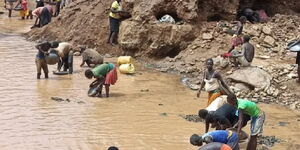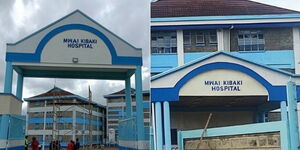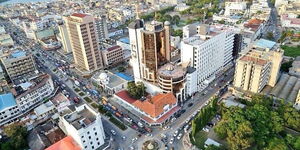If you are a road user in Kenya, you will most likely have seen classifications such as 'A109', 'A104', 'B3', 'B6', 'C77' or 'C55' on the roads.
To many, these might be of little or no significance. But did you know that these classifications play a key role in the country's overall road and transport network?
Kenyan roads are classified into six categories, from A to E, which are further divided into subcategories using numbers. There is also a provision for special road classifications.
The letters and some numbers indicate the type and status of the road within the national network. Also, each class is based on the road’s function and the administrative level it serves.
Class A Roads
This category of roads forms Kenya’s most important highways and connects Kenya to international boundaries. They are also called international trunk roads and are part of the Trans-African Highway network.
The roads serve as a link between centres of international importance, cross international boundaries, and typically terminate at international ports.
Examples of Class A roads in Kenya are:
- A109, which flows from Mombasa to Nairobi. It links the port of Mombasa to inland Kenya and Uganda.
- A104, which starts at Namanga, flows to Nairobi and ends at Malava near the Uganda border. It is part of the Northern Corridor and also passes by Nakuru and Eldoret. The A104 forms the widely used Nairobi-Nakuru and Nakuru-Eldoret highway. Crucially, both the A109 and A104 roads meet in Nairobi, near Kitengela.
- There is also the A1 Road, which starts at Isebania near the Tanzania border, linking Kisii, Kisumu, Lodwar, Lokichogio, and ends at Nadapal at the South Sudan border.
Class B Roads
Next are the Class B roads, which connect nationally important centres, principal towns, and urban areas. They are also called national trunk roads and can also connect with class A roads.
Examples are:
- The B3 which flows from Nairobi heading towards Thika, Garissa, Dadaab and ends at Liboi, towards the Somalia border.
- The B1 begins at Busia, flowing to Kisumu, Ahero, Kisii, and ends at Isebania. This crucial road links towns in Western Kenya.
- The other is the B6, which flows from Embu, Meru, and heads towards Isiolo.
Class C Roads
A road that links provincially important centres to each other or to higher-class roads is known as a class C road. This might mean connecting county towns or connecting class A or class B roads.
Examples are:
- The C77, which flows from Murang’a town to Sagana town.
- The C99, flowing from Machakos town to Kangundo.
- The C55, which begins in Kericho town and ends in Bomet town.
A key point to note is that Class A, B and C roads are all managed by the Kenya National Highways Authority (KeNHA), while the road classifications below them are managed by Kenya Rural Roads Authority (KeRRA).
Class D and Class E connect local towns to more important ones and also link minor centres, markets and or local areas. An example of a Class D road is the one from Mwiki to Kasarani, while Class E roads are mostly found in rural areas.
Special class roads involve forest roads, roads serving schools, hospitals, and government institutions, roads leading to coffee, tea, wheat, and sugar growing areas, roads leading to national parks, and unclassified rural roads leading to mineral deposits.
The current road classification system was developed 30 years ago.












